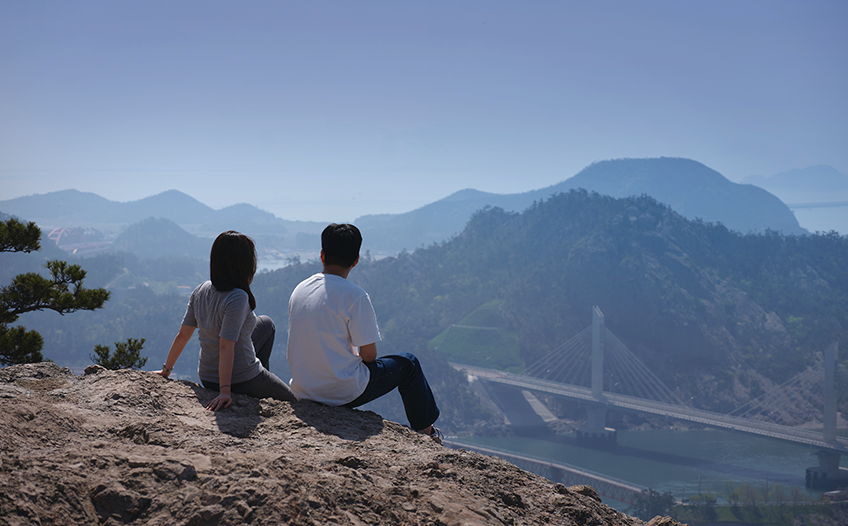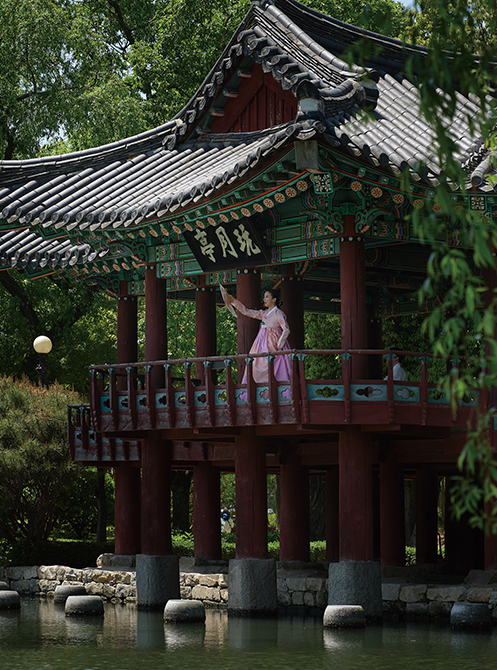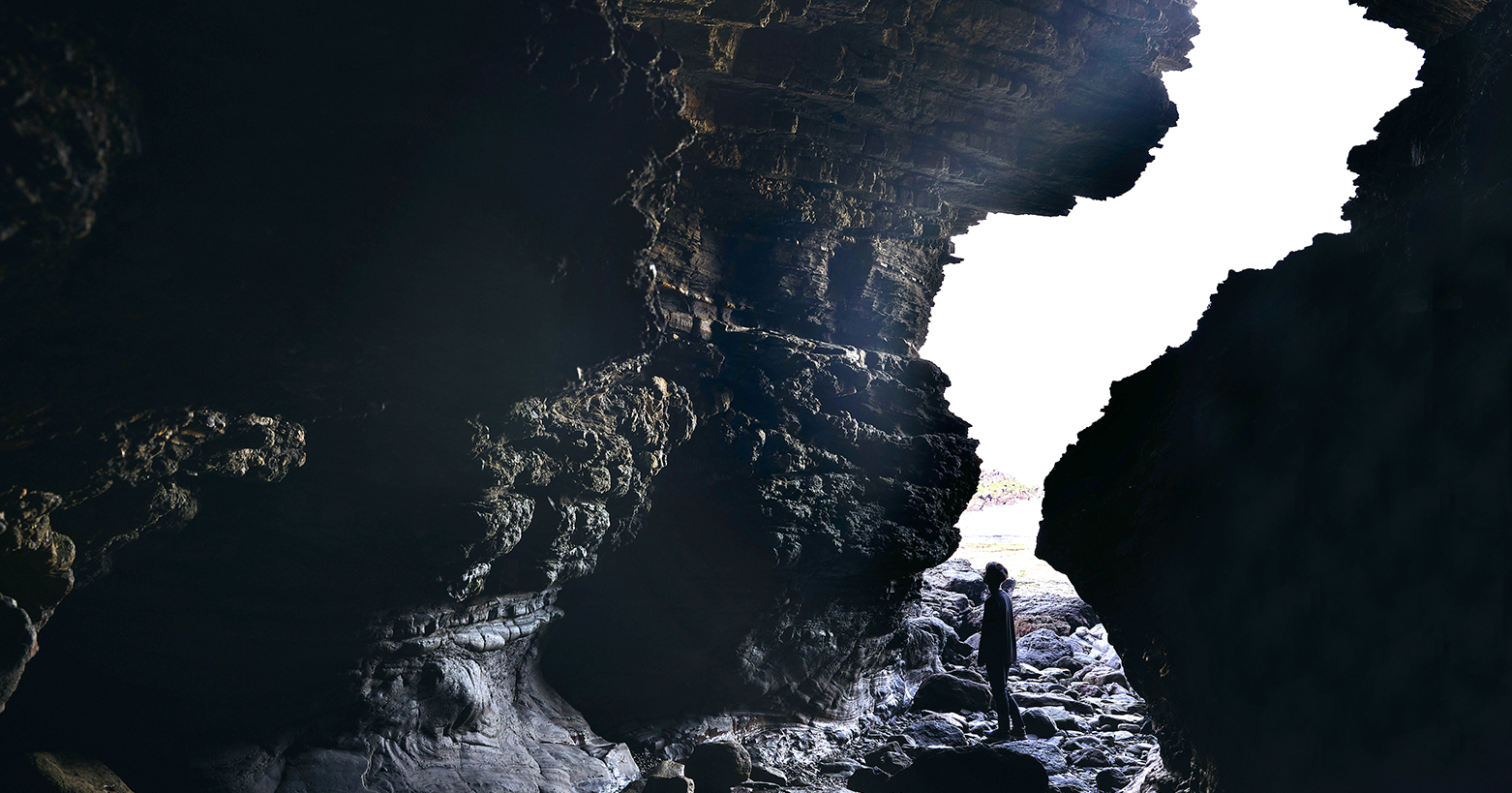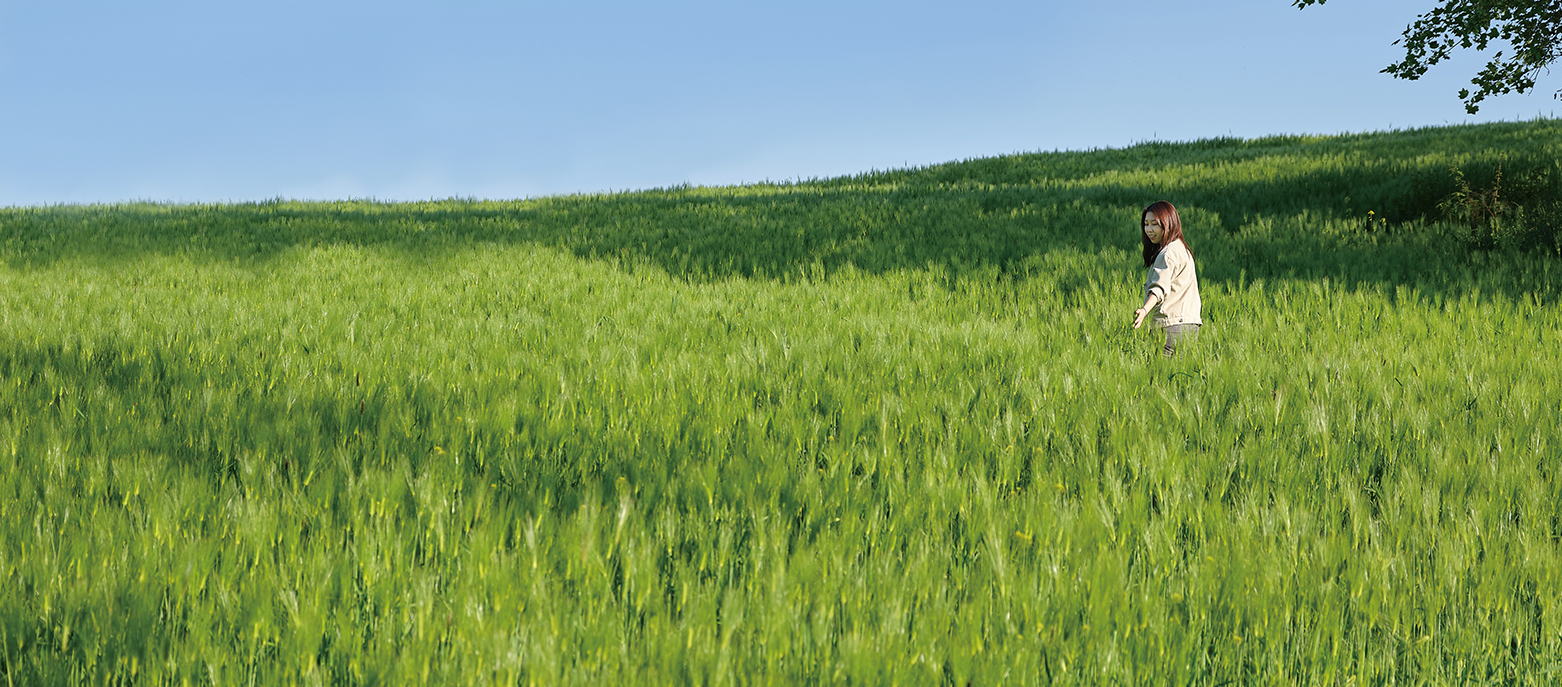
Contents










Story · Written by Kim Samuel Photographed by Studio Kenn
Sound of Imperturbable
Happiness
From unique rock formations and cliffs masterfully sculpted by time, waves and winds to a temple that harmoniously coexists
with a steep mountain, not to mention the enticing songs passed down by word of mouth over generations and
the world’s largest breakwater connecting an island to the mainland across the sea. The wonders of Jeollabuk-do Province are countless.
Its natural treasures honed over centuries to see the light of day whisper a gentle melody telling people to
slow down the hectic pace of their busy lives.
The Saemangeum Seawall is a 33.9 km-long embankment connecting Buan-gun County and Gunsan. Construction began in 1991 and took 19 years to complete, resulting in a the world’s longest dyke with an average width of 290 meters (535 meters at its widest point) and an average height of 36 meters (54 meters at its highest point). Most of the structure is submerged but an exposed portion rises about 11 meters above sea level. To fully fathom the immensity of this mega structure that connects the mainland and islands requires viewing from the sky above.
The Gogunsan-do Islands comprises a few dozen islands now connected to the mainland thanks to this embankment. These islands stand tall over the sea like mountains do on land, which is why they were a naval outpost that protected the Yellow Sea during the Goryeo Dynasty (918 C.E.-1392). The islands in the center of the archipelago, famous for their gorgeous scenery, are named Seonyudo, which means “strolling Daoist hermits.” At the end of the road stands Daejangdo Island, whose name means “large and long,” a fitting moniker given the large-scale long bridge built a few years ago.

The view of Seonyudo Island from the top of Daejangbong Peak is absolutely breathtaking.
The path to explore Daejangdo Island is best enjoyed slowly. The hiking trail is so gradual and gentle that it hardly seems like a hiking path, making it more fun than the steep stairs leading up to the top. Going up means encountering the muddy paths created by the overflowing spring water that flows down the rock faces. At the peak, the beautiful scenery of Seonyudo, and even the bridge in the distance that leads to the mainland, are seen at a glance. An island once accessible by boat only is now part of a trail connected to the mainland where visitors can take a leisurely stroll.

The Saemangeum Seawall is the world’s longest of its kind, offering a unique view along the road as well as a camping site for families. © Saemangeum Development and Investment Agency
Melodies Carved in History
Pansori (one-person Korean lyrical opera) is a leading symbol of Korean tradition. Selected by UNESCO as a Masterpiece of the Oral and Intangible Heritage of Humanity in 2003, this music genre was first heard in Jeollabuk-do Province; the city of Jeonju is considered its birthplace. The settings of renowned classical literary works such as “Chunhyangjeon (The Tale of Chunhyang)” and “Heungbujeon (The Story of Heungbu)” are also in this province.
Because pansori is folk theater, no written records on its history exist; rather, it survives through the circumstantial evidence of the area’s elites. Traditionally, clowns sang to provide solace to the common people in farm villages and marketplaces, though they also performed in the gardens of bureaucrats and rich families. As time went by, the genre continued to expand to encompass a far broader spectrum of social classes than any other form of folk theater.
“Hello, there! Let’s have fun!” This famous line is from “Chunhyangga,” which tells the story of Yi Mongryong, the son of a district magistrate, who visits Gwanghallu Pavilion in Namwon and is struck with love at first sight for Seong Chunhyang as she plays on a swing. The sheer scale of the song is so enormous that it takes more than eight hours to complete, making the tune one of the greatest in history. The pavilion was built as a small tower in 1419, as Joseon was taking its first step toward becoming a dynasty. It was destroyed during the second Japanese invasion of Korea (1597-98) but rebuilt in 1638. This beautiful structure is widely considered the epitome of traditional towers and gazebos, with its broad and pure appearance. Seeing the building adds power to the touching lyrics sung by Chunhyang and Mongryong. The melody boasts a long history carved in collective history that has been passed down for generations. The nearby Chunhyang Theme Park often hosts pansori performances by talented singers and offers a prime opportunity to experience this uniquely Korean art.
 Gwanghallu Pavilion is filled with the powerful and emotional sound of pansori (Korea one-person lyrical opera) singer.
Gwanghallu Pavilion is filled with the powerful and emotional sound of pansori (Korea one-person lyrical opera) singer. Diverse events like parades for a new district magistrate or madanggeuk (traditional Korean performance) are held in many parts of Namwon both on weekdays and weekends.
Diverse events like parades for a new district magistrate or madanggeuk (traditional Korean performance) are held in many parts of Namwon both on weekdays and weekends.The Beauty of Incompleteness
The road to Naesosa Temple is lined with a forest of fir trees, earning the area inclusion on the list of “Korea’s 100 beautiful roads.” Little birds flying and chirping over the trees seemingly reaching the sky are among the highlights of traversing this road. Originally built in 633 C.E. during the Baekje Kingdom period, the temple remains one of the country’s oldest and has undergone repeated expansion and repair over a long time. After being destroyed during the first Japanese invasion of 1592, it was rebuilt in 1633. Construction of Daeungbojeon Hall did not employ a single nail but rather conducted assembly using carved pieces of wood. The hall also has high aesthetic value for encapsulating the essence of the wooden architecture of the time.
Though the decorative colors of dancheong (traditional coloring on wooden buildings and artifacts) have faded due to sunlight and rainfall, the wood that supports the building has endured for centuries, making it unspeakably antique and vintage. The door is decorated with wooden gratings and flower patterns carved into the wood, and going past it brings a sweet fragrance and the warm sound of a wooden percussion that rush onwards. Though the temple looks perfect in all aspects, it has a couple of incomplete spots: the Chungnyang beams and the unfinished mural, which is remembered with a legend.

The road to Naesosa Temple is lined with a forest of fir trees, making the trip more refreshing.
When Daeungbojeon Hall was under construction, the story goes, a boy monk who was watching a carpenter working hid a piece of wood as a prank. After polishing all of the wooden pieces, the carpenter realized the piece was missing and thus appeared to give up on the project entirely. Realizing what he had done, the monk returned the wooden piece but the carpenter had finished construction without it after deciding that corrupted wood was unworthy of use. The next step was to paint a mural, and despite the mysterious painter’s repeated instructions not to look inside, the curious monk opened the door to see. Out flew a bird holding a painting brush in its beak. Through the present day, nobody has attempted to complete these parts.
The grandiose sound of the bell causes even the tiniest tree leaves to vibrate as the ring spreads to all corners of the valley. People treading on the rustling sand and walking to and fro stop in front of the bell, put their hands together and go up to the Buddhist altar. The beauty of Naesosa Temple, finished yet incomplete at the same time, is powerful enough to touch all who visit.

The grandiose and clean sound of the bell resonates in the heart.
Whispers of Nature
The Chaeseokgang Cliffs of Buan-gun County protrude toward the sea, creating a breathtaking scene of the forest and marine scenery. On the coast not too far from Naesosa are enormous strata resembling millions of books stacked in columns, as well as sea cliffs and wave-cut terraces unique to this landscape. Over a cliff cut and shaped by the winds and waves, green leaves glisten from a tall evergreen tree firmly unwilling to give up any more land.
At a festival on the green barley fields of Gochang-gun County, people come and go, walking through the emerald fields where the barley patiently ripens. The sound of their chatter fades away as one walks over the shallow ridge and enters a narrower path. The trace of the wind twirling and going forward can be seen, as shown by the curling waves of barley. The rustling of leaves travels with the wind, as if to suggest to people to walk just a bit slower. Experiencing nature’s rich stories accumulated over centuries at the Chaeseokgang Cliffs is thus sure to impress anyone.
 The layers of the Chaeseokgang Cliffs show the eternity of the time.
The layers of the Chaeseokgang Cliffs show the eternity of the time.
More about Jeollabuk-do Province ⟶
Other Articles















